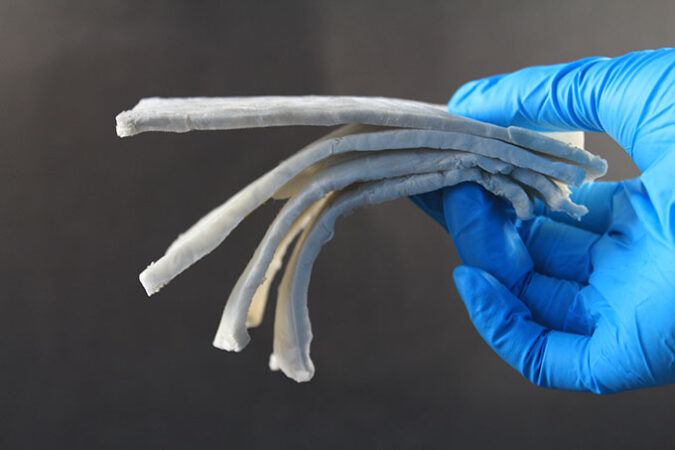‘Frozen smoke’ could protect electronics from annoying static
It would shield circuits from disruption and possible damage from nearby motors and more

A porous new material can help shield electronic circuits and computer chips from disruption by motors and more, a new study shows. Good-bye Faraday cages?
Wiyada Arunwaikit/iStock/Getty Images Plus
By Sid Perkins
Motors can cause static on radios. Some can keep electronic circuits from working as they were meant to. These motors create disruptive electromagnetic fields. And those fields might even fry really fragile circuits. That’s why engineers generally shield circuitry inside relatively clunky metal screening. These are known as Faraday cages. But jacketing those circuits in “frozen smoke” might serve the same purpose, scientists now show.
Faraday cages can be cumbersome and heavy, notes Gustav Nyström. He’s a materials scientist at the Swiss Federal Laboratories for Materials Science and Technology in Dübendorf. Wanting a lighter-weight material, his team turned to aerogels.
These fluffy and flexible materials look a bit like really spongy Swiss cheese. They have tons of itty-bitty holes, known as pores. Some aerogels are around 99 percent air. That’s why engineers may describe them as frozen smoke. The challenge for Nyström’s team was to make an aerogel that also conducts electricity.

They explain how they did it in the March 24 issue of ACS Nano.
This appears to be “a very innovative way to shield electronics,” says Zhanhu Guo. This materials scientist works at the University of Tennessee in Knoxville and did not take part in the research. The new aerogel could jacket single components, he notes. Or it could blanket bigger systems that emit microwaves or other types of harmful radiation.
Aerogels to the rescue
For its new aerogel, the Swiss team started with wood. They used chemicals to remove all but its cellulose. This structural fiber is a polymer. (That means it’s made of a chain of many small repeating links.) The researchers ground the cellulose into very small bits. Each was only some 450 nanometers (less than 200 thousandths of an inch) long.
To let the substance conduct electricity, the researchers added small bits of silver. Each silver bit is about 50 nanometers (2 millionths of an inch) in diameter and about a thousand times longer than that. Then the researchers mixed these and the cellulose with water.
Afterward, the mix was frozen and placed in a low-pressure chamber. That made the ice in the mix sublime — move directly from a solid to a gas. This freeze-drying leaves the fluffy aerogel behind.
When electromagnetic waves enter this material, most will bounce around inside its pores and get trapped. The silver then conducts their energy away.
To tailor the size and the shape of the ice crystals, researchers just control how the mix freezes, Nyström says. This affects the aerogel’s pore size and shape and how well it shields. Faster freezing creates smaller ice crystals, smaller pores and better shielding. And if the watery solution is frozen from a single direction, the ice crystals will become needle-like. (That would happen if the watery solution were sitting on a cold plate in a warm lab, for instance.) This aerogel would now shield better from some directions than others.
Some samples of the team’s new liquid smoke would have blocked more than 99.99 percent of any electromagnetic interference. And because this material is simple to make from commonly available materials, it should cost little to make.
Guo at the University of Tennessee points out that the new material doesn’t use petroleum products. So these aerogels, he says, also should be an eco-friendly alternative to Faraday cages.







